Rockford Fosgate OEQ2 HIGH Installation & Operation Manual
- Catégorie
- Amplificateurs audio de voiture
- Taper
- Installation & Operation Manual

®®
INSTALLATION
& OPERATION
HIGH
PERFORMANCE
PARAMETRIC
EQUALIZER

Dear Customer,
Congratulations on your purchase of the world's finest brand of car audio signal
processors. At Rockford Fosgate we are committed to musical reproduction at its best,
and we are pleased you chose our product. Through years of engineering expertise, hand
craftsmanship and critical testing procedures, we have created a wide range of products
that reproduce music with all the clarity and richness you deserve.
For maximum performance we recommend you have your new Rockford Fosgate
product installed by an Authorized Rockford Fosgate Dealer, as we provide specialized
training through Rockford Technical Training Institute (RTTI). Please read your
warranty and retain your receipt and original carton for possible future use.
To add the finishing touch to your new Rockford Fosgate image order your Rockford
accessories, which include everything from T-shirts and jackets to hats and sunglasses.
To get a free brochure on Rockford Fosgate products and Rockford accessories, in the
U.S. call 602-967-3565 or FAX 602-967-8132. For all other countries, call +001-602-
967-3565 or FAX +001-602-967-8132.
The serial number can be found on the outside of the box. Please record it in
the space provided below as your permanent record. This will serve as
verification of your factory warranty and may become useful in recovering your
equipment if it is ever stolen.
Serial Number: ____________________
Model Number:____________________
If, after reading your manual, you still have questions regarding this product,
we recommend that you see your Rockford Fosgate dealer. If you need further
assistance, you can call us direct at 1-800-795-2385. Be sure to have your serial
number, model number and date of purchase available when you call.
PRACTICE SAFE SOUND™
CONTINUOUS EXPOSURE TO SOUND PRESSURE LEVELS OVER
100dB MAY CAUSE PERMANENT HEARING LOSS. HIGH POW-
ERED AUTO SOUND SYSTEMS MAY PRODUCE SOUND PRES-
SURE LEVELS WELL OVER 130dB. USE COMMON SENSE AND
PRACTICE SAFE SOUND.

TABLE OF CONTENTS
Introduction ............................................................................................1
Accessory Pack .......................................................................................1
Technical Design Features ......................................................................2
Design Features.......................................................................................3
Installation Considerations ......................................................................5
Mounting Location..................................................................................6
Wiring the System ...................................................................................6
OEQ
2
Installation....................................................................................8
OEQ
2
Operation ...................................................................................13
System Diagrams...................................................................................16
Rockford Fosgate Accessories................................................................20
Troubleshooting ....................................................................................21
Specifications........................................................................................24
Warranty Information............................................................................25
International Information.......................................................................26
Sections marked
TROUBLESHOOTING
include recommendations
for curing
installation problems
Sections marked
INSTALLATION
include “slam dunk”
wiring connections
I
N
S
T
A
L
L
A
T
I
O
N
® ®
TROUBLE-
S
H
O
O
T
I
N
G
Sections marked
ADVANCED OPERATION
include in-depth
technical information
a
d
v
a
n
c
e
d
O
p
e
r
a
t
i
o
n
Welcome to Rockford Fosgate! This manual is designed to provide
information for the owner, salesperson and installer. For those of you who
want quick information on how to install this product, please turn to the
Installation Section of this manual or refer to the icons listed below. Other
information can be located by using the Table of Contents. We, at
Rockford Fosgate, have worked very hard to make sure all the information
in this manual is current. But, as we are constantly finding new ways to
improve our product, this information is subject to change without notice.
GETTING STARTED

– 1 –
INTRODUCTION
The OEQ
2
is an octave equalizer used to help compensate for
acoustical inaccuracies common in the automobile environment.
The OEQ
2
is a stereo equalizer with ten bands of frequency adjust-
ment spaced at octave intervals. Each band can accommodate up to
12dB of boost or cut to overcome dips and peaks in the response
curve. Frequency Warp controls shift center frequencies half an
octave up and half an octave down for precise adjustment. Input and
output gains are utilized for proper gain settings while a pair of LED
monitors track input levels. The high output voltage available from
the OEQ
2
allows it to also be used as a line driver, and its low output
impedance supports the connection of several amplifiers without
signal degradation. The OEQ
2
is a versatile, high performance
equalizer with convenient features that will fine tune any system and
help solve response problems.
ACCESSORY PACK
Installation and Operation Manual
(4) Mounting Screws
(1) Power Connector

TECHNICAL DESIGN FEATURES
◆ High-Q Filters
Hi-Q filters are utilized for adjusting narrow frequency bands in an
equalizer. Filter “Q” or Quality Factor is a measure of the “narrow-
ness” of the filter response. Using Low-Q (wide) filters in an equalizer
allows adjustments made on one control to strongly effect neighbor-
ing frequencies during boost or cut. Hi-Q filters avoid problems like
adjacent band overlap which minimize the time needed to remove
frequency response errors.
THE RESULT: Avoids adjacent band overlap through precise filtering.
◆ Frequency Warp
The Frequency Warp controls shift the center frequency of each band
higher or lower in frequency (up to 1/2 octave). This enables the
equalizer to pinpoint “dips” and “peaks” in the response curve. The
frequency warp is useful when using an RTA (Real Time Analyzer) to
find and correct problems located between the equalizer's center
frequencies.
THE RESULT: Easier to equalize response errors by pinpointing
problem frequencies.
◆ Balanced Line Inputs
Using the BLT (Balanced Line Transmitter) provides the last word in
achievable rejection of noise induced in the cable between the
source and the signal processor. The differential input circuitry used
in the balanced input system rejects whatever signals are common to
both of the shielded, twisted pair conductors. Balanced line is
universally used in concert installations where the stage and mixing
consoles are hundreds of feet apart. Long signal cables and electri-
cally-noisy environments make signal integrity and noise rejection
an extremely difficult challenge.
THE RESULT: Quiet transmission of audio from source to signal
processor.
– 2 –

DESIGN FEATURES
– 3 –
6
RIGHT LEFT
LEFT
IN
RIGHT
IN
GND B+ REM
BAL INRCA
BAL
BYPASS
ENGAGE
1432 12
6
RIGHT LEFT
7
BAL OUT
1. RCA Input Jacks – The industry standard RCA jacks provide easy
connections for signal level input. They are gold-plated to resist the
signal degradation caused by corrosion.
2. Balanced Line Input – This input will allow the optional Balanced
Line Transmitter to be used for better noise rejection.
3. Signal Input Switch– This switch allows selection of either RCA or
Balanced Line inputs.
4. Engage/Bypass Switch – This switch enables the OEQ
2
to process the
signal or bypass the Boost/Cut and Frequency Warp controls for a
“dry” output.
5. Input Sensitivity Controls – The input sensitivity controls are preset
for
500mV
which will match the output of most source units. They
can be adjusted to match input levels ranging from
500mV to 9.3V
.
6. RCA Output Jacks – The RCA Output Jacks provide a parallel output
and are used to connect the signal to the next component's input
jacks. They are gold-plated to resist the signal degradation caused by
corrosion.
7. Balanced Line Output – The balanced output allows a balanced line
cable to be used between the output of the OEQ
2
and the input of the
next component to provide better noise rejection.

– 4 –
8. Output Level Attenuators – The Output Level Attenuators are
used to cut the output level for matching the input of the amplifier.
They can be adjusted to levels ranging from a minimum ratio of
1:0 (no output) to a maximum ratio of 1:1.
9. Boost/Cut Controls – These controls provide up to 12dB of boost
or cut to the selected frequency.
10. Frequency Warp Controls – These controls provide up to an
octave range (1/2 octave up and 1/2 octave down) from the center
frequency to pinpoint “dips” and “peaks”.
11. LED Level Indicators – The level indicators monitor the input level
of the OEQ
2
. The indicators utilize green, amber and red LEDs to
represent low, high and maximum signal level.
12. Power Connector – The power connector provides a convenient
connection for ground, power and remote. The connector uses
“screw lock” terminals to secure the power wires and is remov-
able for quick disconnects.
13. B+ Fuse – The B+ fuse protects the power supply and battery from
short circuits and power failures.
14. DGND/AGND Jumper – This jumper is used for troubleshooting
systems which may exhibit noise due to ground loops or lack of
ground potential.
0
+
12
-12
0
+
12
-12
0
+
12
-12
0
+
12
-12
0
+
12
-12
0
+
12
-12
0
+
12
-12
0
+
12
-12
0
+
12
-12
0
+
12
-12
0
+
12
-12
0
+
12
-12
0
+
12
-12
0
+
12
-12
0
+
12
-12
0
+
12
-12
0
+
12
-12
0
+
12
-12
0
+
12
-12
0
+
12
-12
L
E
F
T
R
I
G
H
T
DGND
CHS
AGND
5
11
14
13
5
8
8
9
9
10

– 5 –
INSTALLATION CONSIDERATIONS
This section focuses on some of the vehicle considerations for installing
your new OEQ
2
. Pre-planning your system layout and best wiring routes
will save installation time. When deciding how to lay out your new
system, be sure that each component will be easily accessible for making
adjustments.
Before beginning any installation, be sure to follow these simple rules:
1. Be sure to carefully read and understand the instructions before
attempting to install the OEQ
2
.
2. For safety, disconnect the negative lead from the battery prior to
beginning the installation.
3. For easier assembly, we suggest you run all wires prior to mounting
your OEQ
2
in place.
4. Route all of the RCA cables close together and away from any high
current wires.
5. Use high quality connectors for a reliable installation and to mini-
mize signal or power loss.
6. Think before you drill! Be careful not to cut or drill into gas tanks, fuel
lines, brake or hydraulic lines, vacuum lines or electrical wiring when
working on any vehicle.
7. Never run wires underneath the vehicle. Running the wires inside the
vehicle provides the best protection.
8. Avoid running wires over or through sharp edges. Use rubber or
plastic grommets to protect any wires routed through metal, espe-
cially the firewall.
9. ALWAYS protect the battery and electrical system from damage with
proper fusing. Install the appropriate fuseholder and fuse on the
+12V power wire within 18” (45.7 cm) of the battery terminal.
10. When grounding to the chassis of the vehicle, scrape all paint from
the metal to ensure a good, clean ground connection. Grounding
connections should be as short as possible and always be connected
to metal that is welded to the main body, or chassis, of the vehicle.
The following is a list of tools you will need for installing the OEQ
2
Red power wire Wire strippers
Blue remote turn-on wire Wire cutters
Black grounding wire Voltmeter
Electric hand drill w/assorted bits Jeweler's slotted screwdriver
Battery post wrench

MOUNTING LOCATION
The mounting location for the OEQ
2
should allow easy access to the
controls for making necessary adjustments. The OEQ
2
will most likely be
adjusted only at the time of installation and will not need further
adjustment unless changes to the audio system are performed. To ensure
optimum performance, care should be taken when mounting the equal-
izer in the following locations:
Engine Compartment
Mounting the OEQ
2
in the engine compartment will void your warranty.
The only thing that should be mounted in the engine compartment is that
big metal thing that makes the vehicle go fast.
Passenger Compartment Mounting
Mounting the equalizer in the passenger compartment will provide easy
access for making adjustments by ear. Select an area which is free from
excessive dirt or dust. If mounting under the seat, be sure the OEQ
2
will
avoid misadjustment from driver or passenger seat movement.
Trunk Mounting
Mounting the equalizer in the trunk will provide easy access for making
adjustments with an RTA (Real Time Analyzer) and pink noise. Select an
area which will avoid possible damage or misadjustment from loading
and unloading items such as groceries, golf clubs and packages from the
trunk.
– 6 –
WIRING THE SYSTEM
For safety, disconnect the negative lead from the car battery prior to
beginning the installation.
1. Wire the Power Connector
The B+ lead should be connected to a source of non-switched 12 volts
DC. Prepare a length of cable from the constant +12V by stripping 3/8"
of insulation from the end of the wire. Insert the bared wire into the B+
terminal of the power connector and fasten the screw.
NOTE: The B+ lead of the audio system MUST be fused 18" or less from
the vehicle's battery. Install a fuseholder, along with the necessary
fuse, under the hood. Connections should be water tight.
The REM lead should be connected to the remote turn-on or power
antenna output from the source unit. Prepare a length of cable from the
source of switched voltage by stripping 3/8" of insulation from the end

of the wire. Insert the bared wire into the REM terminal of the power
connector and fasten the screw. Total current consumption through
this lead is negligible.
The GND lead should be connected to the chassis ground of the
vehicle. Prepare a length of cable (approximately 12" long) to be used
for the ground lead by stripping 3/8" of insulation from each end.
Insert one end of bared wire into the GND terminal of the power
connector and fasten the screw. Prepare the chassis ground by
scraping any paint from the metal surface and thoroughly clean the
area of all dirt and grease. Strip the other end of the wire and attach
a ring connector. Fasten the cable to the chassis using a non-anodized
screw and star washer.
2. Connect the Source Inputs
To accept RCA inputs, the signal input switch should be OUT.
Connect the front RCA outputs from the source unit to the “LEFT IN”
and “RIGHT IN” connectors on the OEQ
2
.
To accept Balanced Line Inputs, the signal input switch should be IN.
Connect the front RCA outputs from the source unit to the inputs on
the BLT. Connect the balanced line cable from the BLT to the “BAL
IN” connector on the OEQ
2
.
3. Connect the Outputs
Connect the appropriate outputs from the OEQ
2
to the corresponding
inputs on the amplifier(s) or signal processor(s). For greater system
flexibility, all outputs from the OEQ
2
are configured in parallel (refer
to the System Diagrams section of this manual for examples).
4. Adjust System Levels
Set the gain controls on the amplifier(s) as well as the input gain and
output attenuators on the OEQ
2
to minimum. Adjust all Boost/Cut
and Frequency Warp controls to their center position. Adjust 1kHz
Boost/Cut to maximum. Using a 1kHz test tone recorded at ”0dB” or
“all bits high,” adjust the source unit for its maximum unclipped
output. Adjust the input sensitivity on the OEQ
2
until the first red LED
on the OEQ
2
starts to illuminate. Stop the test tone and do not readjust
the volume control. Readjust 1kHz on Boost/Cut to its center position.
Play a musical track with high dynamic content and adjust the output
attenuators on the OEQ
2
to the desired output level (be sure Left and
Right channels are matched). Typically, the amplifier gain controls
will be left at minimum for optimum signal-to-noise ratio. For more
information on adjusting system levels, refer to the Installation
section of this manual.
– 7 –

– 8 –
OEQ
2
INSTALLATION
I
N
S
T
A
L
L
A
T
I
O
N
® ®
LEFT
IN
RIGHT
IN
BAL INRCA
BAL
BYPASS
ENGAGE
Less than 18"
–
+
GND B+ REM
Power Connections
Connect to B+ of battery
with a 2 amp fuse.
Connect to chassis
ground of vehicle.
Connect to remote
turn-on lead of
source unit.
LEFT
IN
RIGHT
IN
BAL INRCA
BAL
BYPASS
ENGAGE
GND B+ REM
RCA
Input
RCA Input Connections
• RCA Outputs from source connect to
LEFT IN
and
RIGHT IN
of OEQ
2
• Signal Input Switch is
out
for RCA Input
NOTE: DO NOT use RCA and Balanced Line Inputs simultaneously.

– 9 –
BLT Input Connections
• RCA Outputs from source connect to input of Balanced Line Transmitter
• Balanced Line Cable from BLT connects to
BAL IN
of OEQ
2
• Signal Input Switch is
pressed in
for balanced line input
NOTE: DO NOT use RCA and Balanced Line Inputs simultaneously.
LEFT
IN
RIGHT
IN
BAL INRCA
BAL
BYPASS
ENGAGE
GND B+ REM
BALANCED LINE TRANSMITTER
INPUT
L R
BALANCED LINE
OUTPUT
®
®
LED
+ L Signal
Shield
+ R Signal
– R Signal
– L Signal
–15V+15V
RCA Input
I
N
S
T
A
L
L
A
T
I
O
N
® ®

– 10 –
I
N
S
T
A
L
L
A
T
I
O
N
® ®
RCA Output Connections
BAL OUT
RIGHT LEFT
LEFTRIGHT
BAL OUT
RIGHT LEFT
RIGHT LEFT
+ L Signal
Shield
+ R Signal
– R Signal
– L Signal
NCNC
• Balanced Output connects to
balanced input
of next component
Balanced Output Connections
• RCA Outputs are configured in
parallel
• Use either RCA Output for
input
of next component

Level Setting the OEQ
2
– 11 –
1. Set the Gain Controls on the amplifier(s) as well as the input gain and
output attenuators on the OEQ
2
to
minimum
.
2. Adjust Boost/Cut and Frequency Warp Controls to their
center
position
3. Adjust 1k on OEQ
2
to
maximum
boost (+12dB)
4. CD Software used to set levels is a test tone of 1kHz at “0dB” or
“All Bits High”
5. Adjust Source Unit to 3/4 volume (or maximum unclipped output)
6. Adjust Input Sensitivity on the OEQ
2
until the first red LED illuminates
7. Stop Test Tone and do not readjust the volume control
8. Adjust 1k on OEQ
2
back to its
center
position
9. Play Musical Track with high dynamic content
10. Adjust Output Attenuators on the OEQ
2
to the desired output level
11. Leave Amplifier Gains at
minimum
for optimum signal-to-noise ratio
AUD
SEL
1 2 3 4 5 6
RDM
RPT
SCAN
PAUSE
D.SCN
DIM
AM
FM
Ch
RPTLD
RDM
DISC
ST
P.SCN LOUDDSPL
R
CLOCK
ILLUM
PWR
AUTO
® ®
VOL
TUNE
0
+
12
-12
0
+
12
-12
0
+
12
-12
0
+
12
-12
0
+
12
-12
0
+
12
-12
0
+
12
-12
0
+
12
-12
0
+
12
-12
0
+
12
-12
0
+
12
-12
0
+
12
-12
0
+
12
-12
0
+
12
-12
0
+
12
-12
0
+
12
-12
0
+
12
-12
0
+
12
-12
0
+
12
-12
0
+
12
-12
L
E
F
T
R
I
G
H
T
® ®
High Performance Parametric Equalizer
a
d
v
a
n
c
e
d
O
p
e
r
a
t
i
o
n
1kHz Test Tone @ “0dB”

Level Setting the OEQ
2
with a BLT
– 12 –
a
d
v
a
n
c
e
d
O
p
e
r
a
t
i
o
n
+
–
9.0
VAC
BALANCED LINE TRANSMITTER
®
®
1kHz Test Tone @ “0dB”
0
+
12
-12
0
+
12
-12
0
+
12
-12
0
+
12
-12
0
+
12
-12
0
+
12
-12
0
+
12
-12
0
+
12
-12
0
+
12
-12
0
+
12
-12
0
+
12
-12
0
+
12
-12
0
+
12
-12
0
+
12
-12
0
+
12
-12
0
+
12
-12
0
+
12
-12
0
+
12
-12
0
+
12
-12
0
+
12
-12
L
E
F
T
R
I
G
H
T
® ®
High Performance Parametric Equalizer
L
R
L
R
AUD
SEL
1 2 3 4 5 6
RDM
RPT
SCAN
PAUSE
D.SCN
DIM
AM
FM
Ch
RPTLD
RDM
DISC
ST
P.SCN LOUDDSPL
R
CLOCK
ILLUM
PWR
AUTO
® ®
VOL
TUNE
1. Set the Gain Controls on the amplifier(s) as well as the input gain and
output attenuators on the OEQ
2
and BLT to
minimum
.
2. Adjust Boost/Cut and Frequency Warp Controls to their
center
position
3. Adjust 1k on OEQ
2
to
maximum
boost (+12dB)
4. CD Software used to set levels is a test tone of 1kHz at “0dB” or
“All Bits High”
5. Adjust Source Unit to 3/4 volume (or maximum unclipped output)
6. Remove BLT Cover to access gain pots
7. Adjust BLT Gain to
9.0 VRMS
using an AC Voltmeter
8. Adjust Input Sensitivity on the OEQ
2
until the first red LED illuminates
9. Stop Test Tone and do not readjust the volume control
10. Adjust 1k on OEQ
2
back to its
center
position
11. Play Musical Track with high dynamic content
12. Adjust Output Attenuators on the OEQ
2
to the desired output level
13. Leave Amplifier Gains at
minimum
for optimum signal-to-noise ratio

– 13 –
OEQ
2
OPERATION
Boost/Cut Control
The Boost/Cut controls are used to increase or reduce emphasis in a specific
octave of music. Each control provides up to 12dB of boost or cut to the
selected frequency. The following graph shows the effect of each control at
the full boost (+12dB) and full cut (–12dB) positions.
Hz
• Graph Illustrates each Boost/Cut control adjusted to –12dB,
0dB, and +12dB
d
B
r
Minimum
–12
+12
–12dB
0
–12
+12
0
Maximum
–12
+12
+12dB
Center
+0dB
0

Frequency Warp Control
The Frequency Warp controls are used to fine adjust the center frequency of
the Boost/Cut controls. Each Warp control allows for a range of 1/2 octave
above and below the center frequency. The following graph illustrates the
operating range of the 1kHz Warp control at its minus (–), center (•), and plus
(+) positions.
– 14 –
• Graph Illustrates Frequency Warp of 1kHz adjusted to Minus, Center,
and Plus
Plus
–
+
(1.5kHz)
0
–
+
0
Minus
–
+
(750Hz)
Center
(1kHz)
0

Engage/Bypass Switch
The Engage/Bypass Switch is useful in system tuning when comparing the
differences between an equalized and non-equalized system. With the
switch in the IN position, all EQ functions are engaged and can be heard.
With the switch in the OUT position, all EQ functions except the input gains
and output attenuators are bypassed from the signal path. In Bypass mode, the
OEQ
2
can be used at the front of the system as a line driver. The signal from
the source unit is amplified with the OEQ
2
input gains. This higher voltage
will help overcome noise which may be picked up in the cable. The higher
voltage results in a better signal-to-noise ratio at the amplifier's input.
• OEQ
2
Bypass Mode allows all functions, except Input Gains and Output
Attenuators, to be
bypassed
• An Alternative Line Driver can be made with the OEQ
2
by using it in
Bypass
mode and placing it near the
front of the signal chain
– 15 –
0
+
12
-12
0
+
12
-12
0
+
12
-12
0
+
12
-12
0
+
12
-12
0
+
12
-12
0
+
12
-12
0
+
12
-12
0
+
12
-12
0
+
12
-12
0
+
12
-12
0
+
12
-12
0
+
12
-12
0
+
12
-12
0
+
12
-12
0
+
12
-12
0
+
12
-12
0
+
12
-12
0
+
12
-12
0
+
12
-12
L
E
F
T
R
I
G
H
T
DGND
CHS
AGND
• OEQ
2
Engage Mode allows
all EQ functions
to be heard
0
+
12
-12
0
+
12
-12
0
+
12
-12
0
+
12
-12
0
+
12
-12
0
+
12
-12
0
+
12
-12
0
+
12
-12
0
+
12
-12
0
+
12
-12
0
+
12
-12
0
+
12
-12
0
+
12
-12
0
+
12
-12
0
+
12
-12
0
+
12
-12
0
+
12
-12
0
+
12
-12
0
+
12
-12
0
+
12
-12
L
E
F
T
R
I
G
H
T
DGND
CHS
AGND
Engage
Bypass
Equalized Output
Full Range Output
20Hz 20kHz
20Hz 20kHz

SYSTEM DIAGRAMS
RCA Input/RCA Output
– 16 –
0
+
12
-12
0
+
12
-12
0
+
12
-12
0
+
12
-12
0
+
12
-12
0
+
12
-12
0
+
12
-12
0
+
12
-12
0
+
12
-12
0
+
12
-12
0
+
12
-12
0
+
12
-12
0
+
12
-12
0
+
12
-12
0
+
12
-12
0
+
12
-12
0
+
12
-12
0
+
12
-12
0
+
12
-12
0
+
12
-12
L
E
F
T
R
I
G
H
T
® ®
High Performance Parametric Equalizer
AUD
SEL
1 2 3 4 5 6
RDM
RPT
SCAN
PAUSE
D.SCN
DIM
AM
FM
Ch
RPTLD
RDM
DISC
ST
P.SCN LOUDDSPL
R
CLOCK
ILLUM
PWR
AUTO
® ®
VOL
TUNE
®®
POWER
250
®
RCA Input
OEQ
2
located in
front of vehicle
RCA Output
Tweeter
Midrange
Tweeter
Midrange

RCA Input/Balanced Output
– 17 –
0
+
12
-12
0
+
12
-12
0
+
12
-12
0
+
12
-12
0
+
12
-12
0
+
12
-12
0
+
12
-12
0
+
12
-12
0
+
12
-12
0
+
12
-12
0
+
12
-12
0
+
12
-12
0
+
12
-12
0
+
12
-12
0
+
12
-12
0
+
12
-12
0
+
12
-12
0
+
12
-12
0
+
12
-12
0
+
12
-12
L
E
F
T
R
I
G
H
T
® ®
High Performance Parametric Equalizer
AUD
SEL
1 2 3 4 5 6
RDM
RPT
SCAN
PAUSE
D.SCN
DIM
AM
FM
Ch
RPTLD
RDM
DISC
ST
P.SCN LOUDDSPL
R
CLOCK
ILLUM
PWR
AUTO
® ®
VOL
TUNE
®®
POWER
250
®
RCA Input
OEQ
2
located in
front of vehicle
Balanced
Output
Tweeter
Midrange
Tweeter
Midrange
La page charge ...
La page charge ...
La page charge ...
La page charge ...
La page charge ...
La page charge ...
La page charge ...
La page charge ...
La page charge ...
La page charge ...
La page charge ...
La page charge ...
La page charge ...
La page charge ...
La page charge ...
La page charge ...
La page charge ...
La page charge ...
La page charge ...
La page charge ...
-
 1
1
-
 2
2
-
 3
3
-
 4
4
-
 5
5
-
 6
6
-
 7
7
-
 8
8
-
 9
9
-
 10
10
-
 11
11
-
 12
12
-
 13
13
-
 14
14
-
 15
15
-
 16
16
-
 17
17
-
 18
18
-
 19
19
-
 20
20
-
 21
21
-
 22
22
-
 23
23
-
 24
24
-
 25
25
-
 26
26
-
 27
27
-
 28
28
-
 29
29
-
 30
30
-
 31
31
-
 32
32
-
 33
33
-
 34
34
-
 35
35
-
 36
36
-
 37
37
-
 38
38
-
 39
39
-
 40
40
Rockford Fosgate OEQ2 HIGH Installation & Operation Manual
- Catégorie
- Amplificateurs audio de voiture
- Taper
- Installation & Operation Manual
dans d''autres langues
- English: Rockford Fosgate OEQ2 HIGH
Documents connexes
-
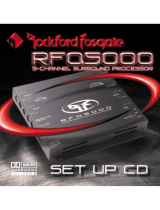 Rockford Fosgate RFQ5000 Setup Instructions
Rockford Fosgate RFQ5000 Setup Instructions
-
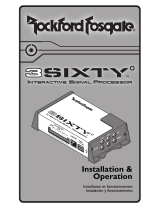 Rockford Fosgate 3sixty Installation & Operation Manual
Rockford Fosgate 3sixty Installation & Operation Manual
-
 Rockford Fosgate 250X2 Installation & Operation Manual
Rockford Fosgate 250X2 Installation & Operation Manual
-
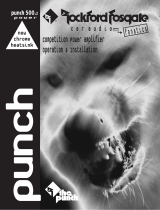 Rockford Fosgate Punch Power 500.2 Manuel utilisateur
Rockford Fosgate Punch Power 500.2 Manuel utilisateur
-
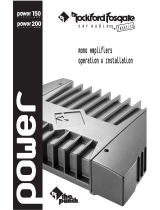 Rockford Fosgate POWER 200 Operation & Installation
Rockford Fosgate POWER 200 Operation & Installation
-
Rockford Fosgate PUNCH150 Installation & Operation Manual
-
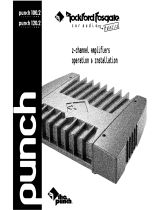 Rockford Fosgate Punch 120.2 Operation & Installation
Rockford Fosgate Punch 120.2 Operation & Installation
-
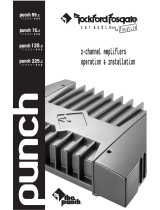 Rockford Fosgate 75.2 Manuel utilisateur
Rockford Fosgate 75.2 Manuel utilisateur
-
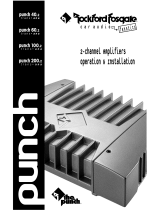 Rockford Fosgate Punch 100.2 Operations & Installation Manual
Rockford Fosgate Punch 100.2 Operations & Installation Manual
-
 Rockford Fosgate punch 60X2 Manuel utilisateur
Rockford Fosgate punch 60X2 Manuel utilisateur
















































